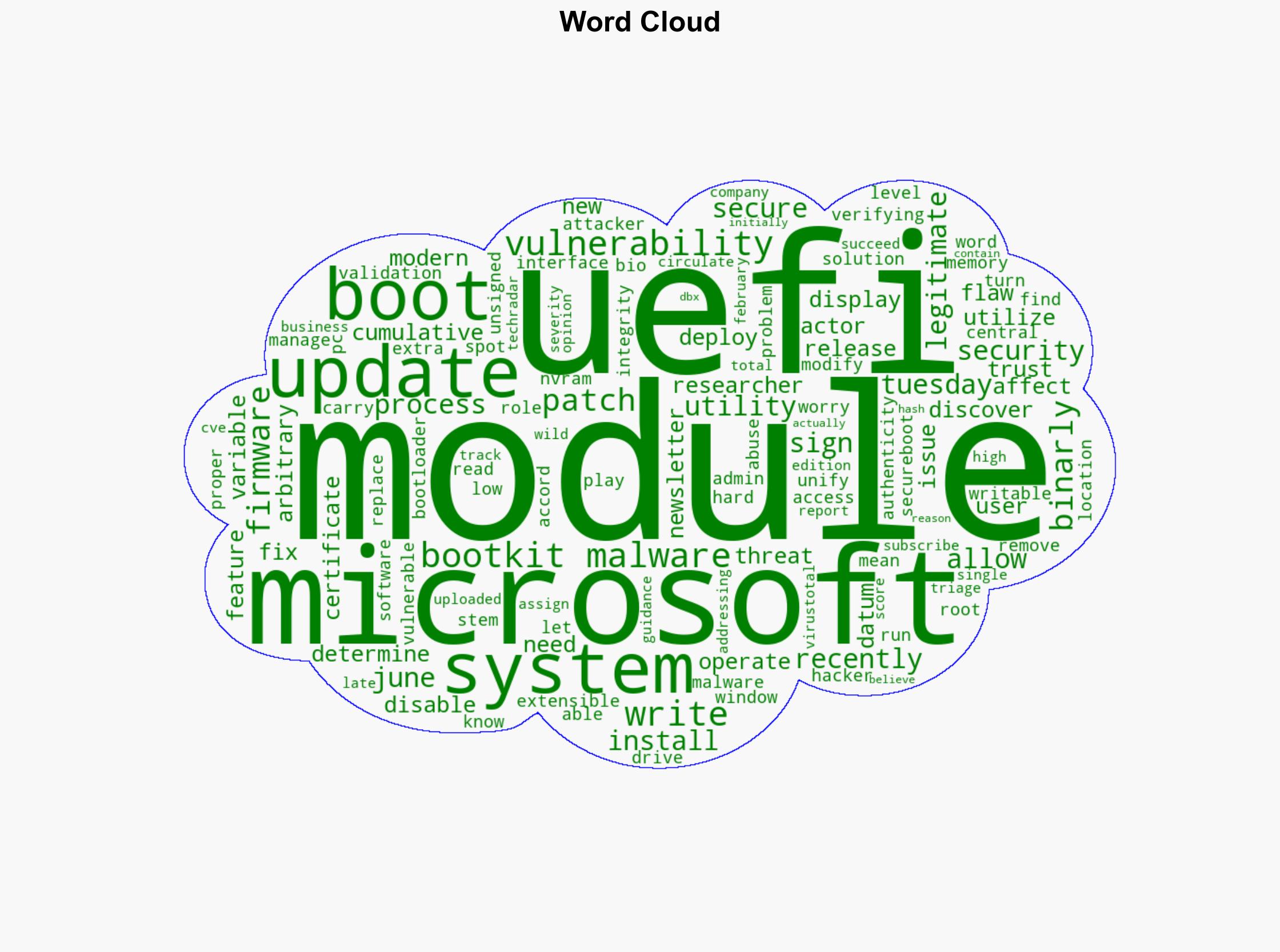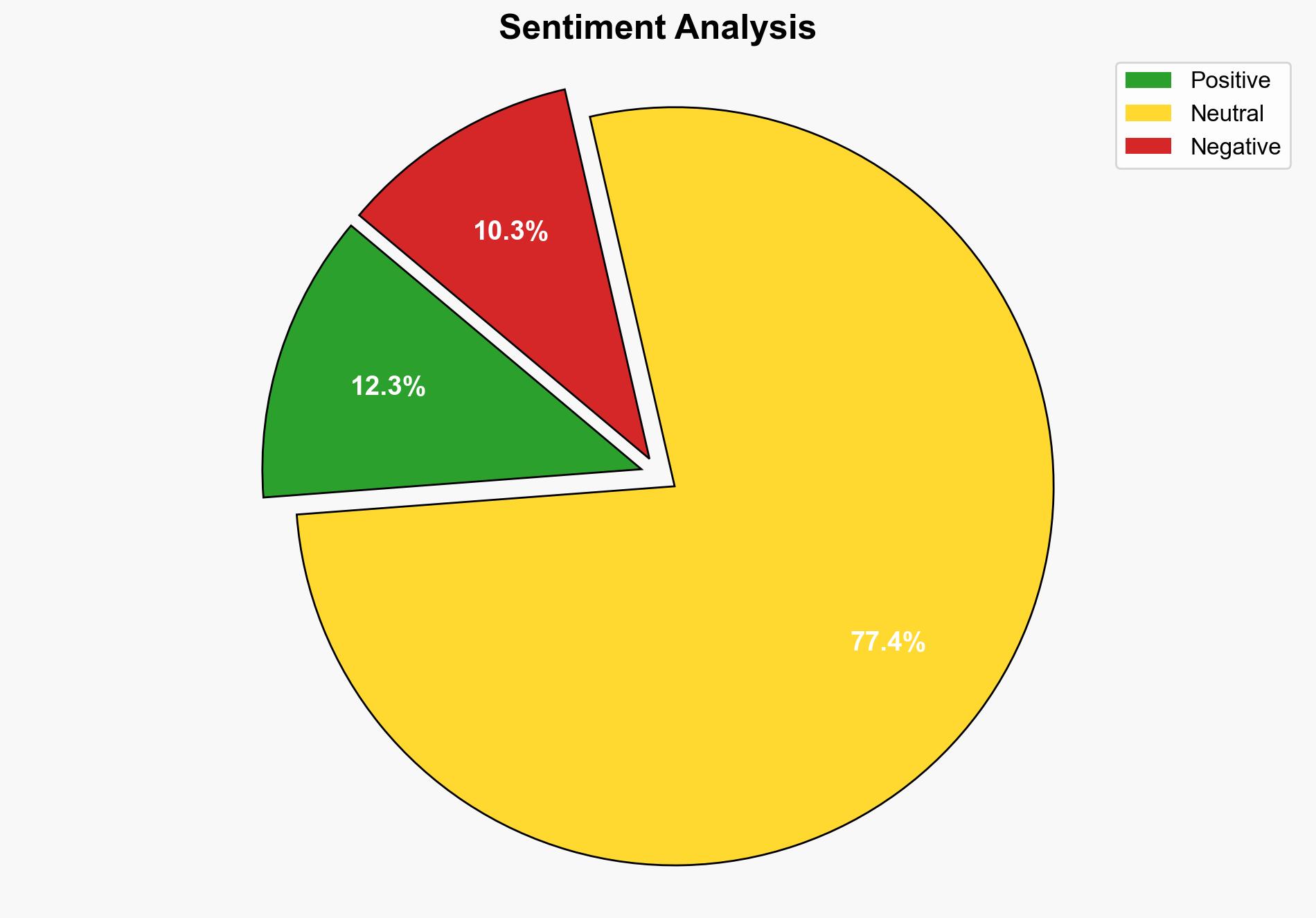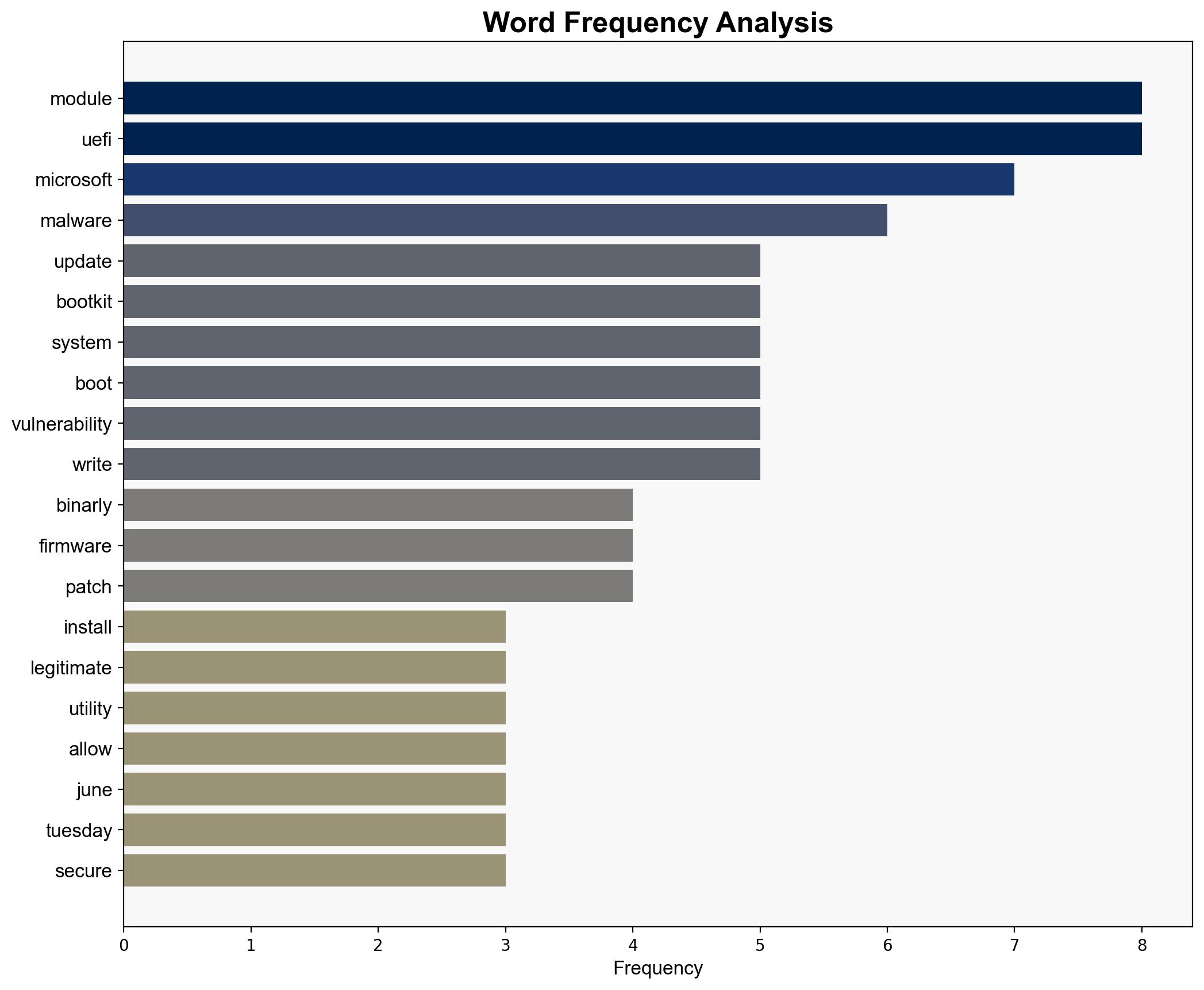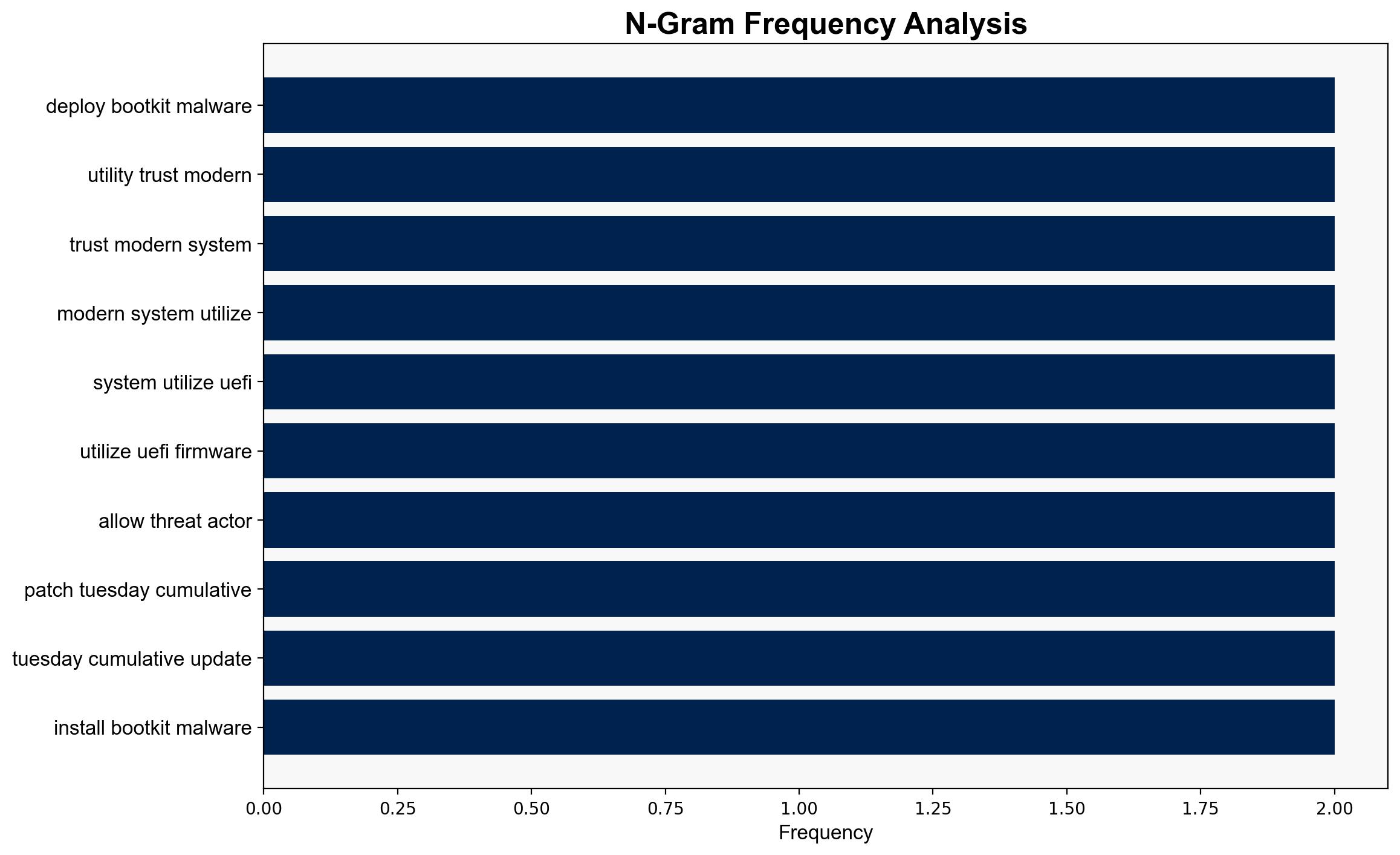A worrying Windows SecureBoot issue could let hackers install malware – here’s what we know and whether you need to update – TechRadar
Published on: 2025-06-11
Intelligence Report: A Worrying Windows SecureBoot Issue Could Let Hackers Install Malware
1. BLUF (Bottom Line Up Front)
A significant vulnerability in Windows SecureBoot has been identified, allowing threat actors to install bootkit malware by exploiting a flaw in UEFI firmware. Microsoft has addressed this issue in their June Patch Tuesday update. Immediate action is recommended for users to apply the updates to mitigate risks. This report utilizes structured analytic techniques to ensure comprehensive analysis and minimize bias.
2. Detailed Analysis
The following structured analytic techniques have been applied to ensure methodological consistency:
Adversarial Threat Simulation
Cyber adversaries could exploit the SecureBoot vulnerability to deploy persistent malware, bypassing traditional security measures. This simulation helps anticipate potential attack vectors and develop robust defense mechanisms.
Indicators Development
Monitoring for anomalies in system behavior and unauthorized changes to UEFI settings can provide early warnings of potential exploitation attempts.
Bayesian Scenario Modeling
Probabilistic models predict the likelihood of various attack pathways, aiding in prioritizing defensive measures and resource allocation.
3. Implications and Strategic Risks
The vulnerability poses a significant threat to cybersecurity, potentially affecting critical infrastructure and sensitive data. The ability to disable SecureBoot could lead to widespread malware infections, impacting economic stability and national security. Cross-domain risks include potential exploitation by state-sponsored actors to conduct espionage or sabotage.
4. Recommendations and Outlook
- Urgently apply the latest Microsoft updates to patch the SecureBoot vulnerability.
- Enhance monitoring for unauthorized changes to UEFI settings and boot processes.
- Develop contingency plans for rapid response to potential breaches.
- Scenario Projections:
- Best Case: Rapid patch adoption minimizes exploitation incidents.
- Worst Case: Delayed updates lead to widespread malware deployment and data breaches.
- Most Likely: Mixed patch adoption results in isolated incidents, prompting further security enhancements.
5. Key Individuals and Entities
Sead Fadilpašić, a freelance journalist, reported on the vulnerability. Binarly, a security research firm, discovered the flaw.
6. Thematic Tags
national security threats, cybersecurity, malware, UEFI vulnerability, SecureBoot, Microsoft updates




